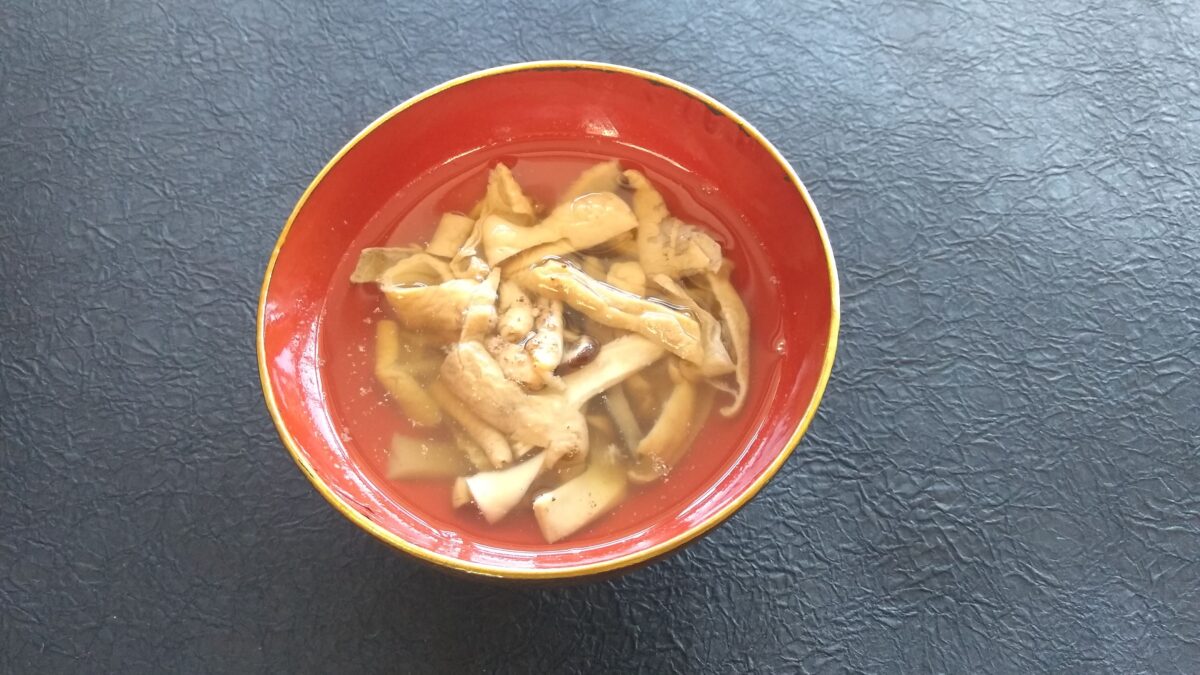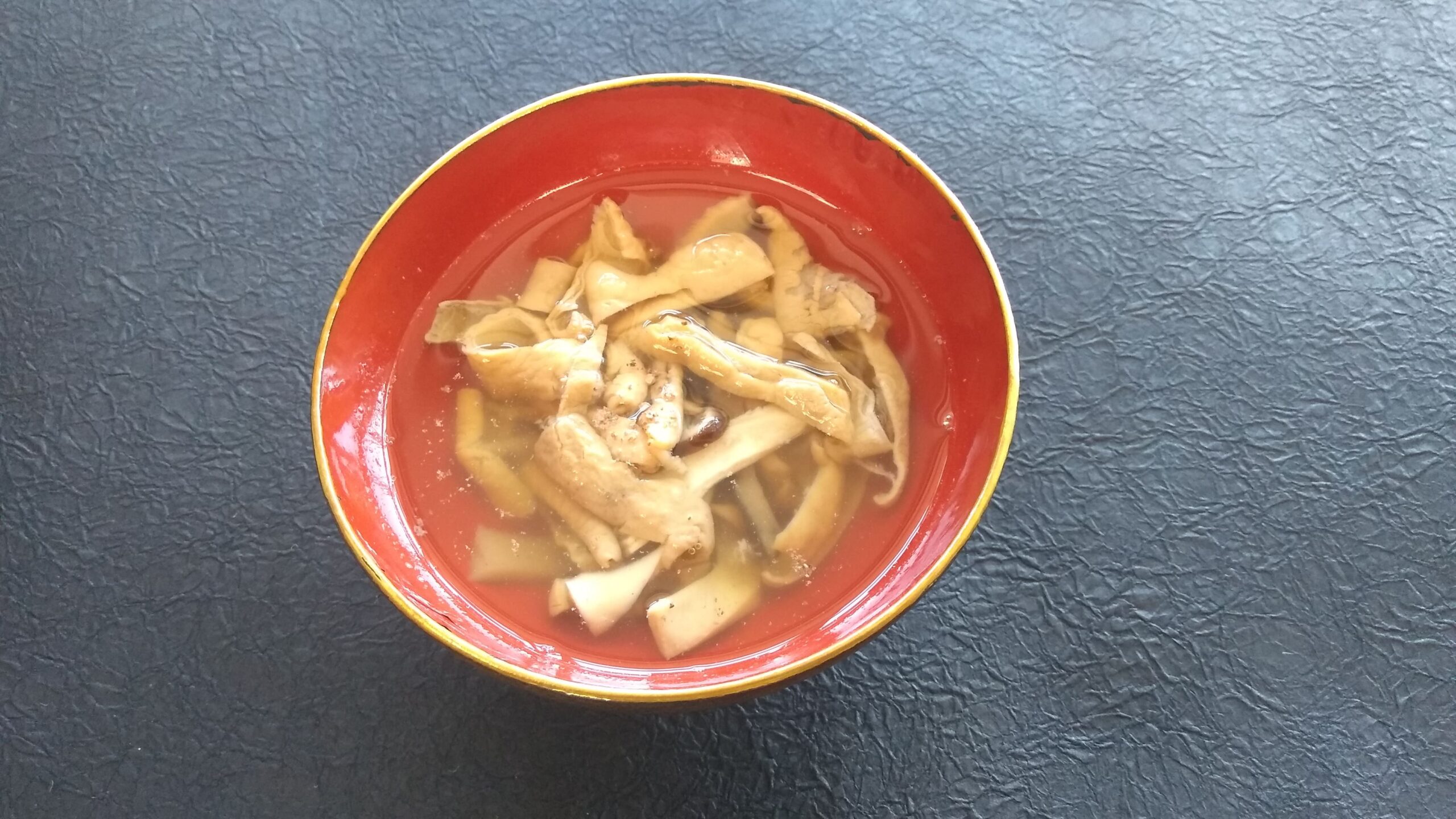
Alright, let’s head to Okinawa, where they have a saying: “We eat every part of the pig except its squeal!” This brings us to “Nakamijiru,” a clear soup featuring pork offal. Don’t let that scare you – it’s a flavorful and important part of Okinawan cuisine!
Dish Name: Nakamijiru / 中身汁
- Region / Location: Okinawa Prefecture (throughout the prefecture).
- Primary Area of Tradition: Throughout Okinawa Prefecture.
- Main Ingredients: 豚の内臓 (Buta no Naizo/pork offal).
How It’s Eaten / Served
Nakamijiru, also known as “Nakamijiru no Suimono” (中身の吸い物), is a simple, clear soup made with pork offal, typically the large intestine, small intestine, and stomach. Despite using offal, it has a surprisingly light and refreshing taste. This is achieved through careful preparation, which involves washing the offal with wheat flour or okara (soy pulp), repeatedly boiling it, and discarding the water to remove any grease and odor.
The broth is a combination of katsuobushi (bonito flakes) and pork stock. For special occasions, like formal meals, the ingredients may be limited to only offal and shiitake mushrooms. Traditionally, “Hihatsu,” a pepper-like spice with a unique aroma, was used, but nowadays, grated ginger is more commonly used.
Cultural Background and Preservation
Nakamijiru is served during New Year’s celebrations, weddings, and funerals, but it’s also enjoyed as an everyday dish in Okinawa.
The preparation process is quite involved: The offal is washed with okara or flour, placed in a pot with plenty of water, brought to a boil, and then the water is discarded. This process is repeated about six or seven times until the offal is clean and odor-free. The offal is then simmered in fresh water until tender, cut into strips, and boiled again.
A broth of pork and katsuobushi stock is prepared, and the offal and thinly sliced rehydrated shiitake mushrooms are added. The soup is seasoned with salt and soy sauce. It’s simmered over medium heat to allow the flavors to meld. Finally, it’s served in a bowl with grated ginger. Some people also add konnyaku (konjac) or kamaboko (fish cake).
Nakamijiru is commonly made at home and served in restaurants throughout Okinawa. You can also find retort-pouched (ready-to-eat) versions in stores.
It’s even served at cooking classes, events, and in hospital meals, showing how deeply rooted it is in Okinawan food culture.
Additional information:
- Okara (おから): Soy pulp, a byproduct of soymilk production.
- Katsuobushi (鰹節): Dried bonito flakes.
- Hihatsu (ヒハツ): A type of long pepper.
- Konnyaku (蒟蒻): A jelly-like food made from the konjac plant.
- Kamaboko (蒲鉾): A type of cured fish surimi.
- Retort pouch (レトルトパウチ): A sealed, heat-sterilized food pouch.
The information about regional cuisine featured on this website (Piggy's Grandma of Japan) is summarized and adapted from the Ministry of Agriculture, Forestry and Fisheries of Japan (MAFF) website, "Our Regional Cuisines"Additional commentary is provided based on the unique experiences and perspectives of the site's editors.
The copyright for the original content regarding regional cuisine belongs to the Ministry of Agriculture, Forestry and Fisheries of Japan.
The summaries and adaptations published on this site are intended for informational purposes only. Piggy's Grandma of Japan does not guarantee the accuracy or completeness of this information. For the most accurate and complete details, please refer to the original pages on the MAFF website.



